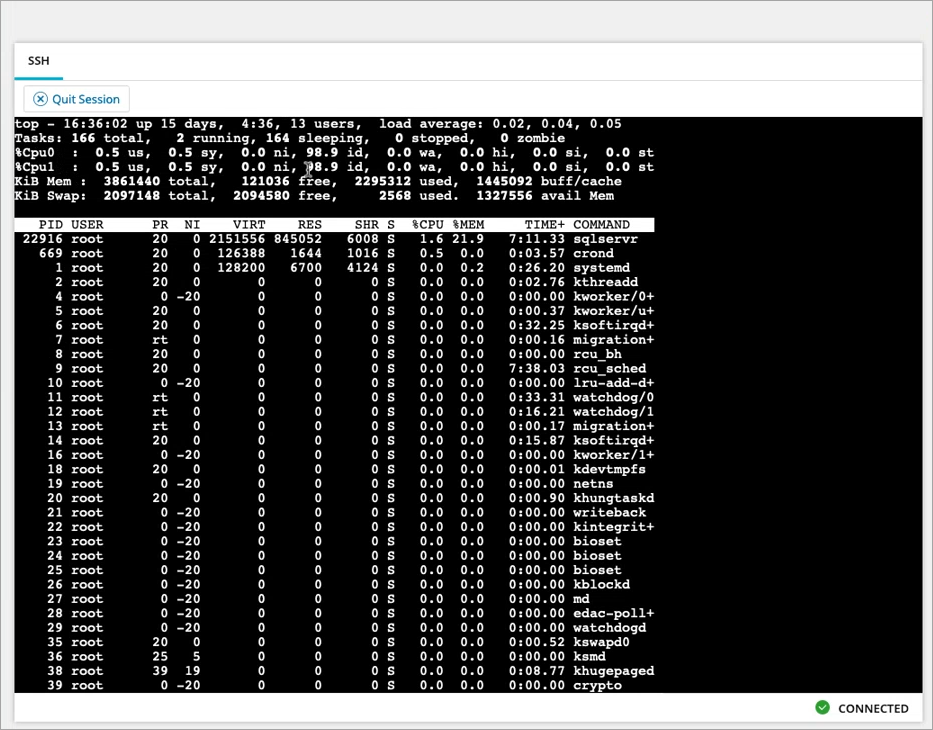
- #Remote ssh anywhere how to#
- #Remote ssh anywhere install#
- #Remote ssh anywhere software#
- #Remote ssh anywhere password#
Check out this quick primer to the Linux command line, as well as these three sites to help you evolve into a Linux command line master. If you're running a web server, you may wish to backup your website using the SSH command line. I've also used SSH to access log files and run benchmarks to test CPU performance.
#Remote ssh anywhere software#
As I run a headless dedicated Plex server, most of what I use SSH and SFTP for is file transfers with occasional software updates.

What you do likely depends on the server and what it's used for.
#Remote ssh anywhere install#
Similarly, to say create a WordPress server, you would just follow the install details but via a SSH command line. When I installed Plex on my headless TS140 via SSH for example, I merely entered: sudo apt-get install plexmedia server -y Installing software merely means plugging in the proper command. For example, you can copy files with the following commands: scp : scp : Some common tasks you may preform are software installs, updates, reboots, copy files, and even run GUI applications. So, what can you actually do? Anything that's possible with the Linux command line. Okay, great! SSH is configured both on the server and the device you'll use to manage your server. +-+-+įor more information about creating and removing peristent tunnels, please see the Persistent Tunnels section of the documentation.How You Can Manage a Remote Linux Server With SSH To make a tunnel persistent, add -persist to the end of the command line options: This means that the tunnel will load automatically every time your Raspberry Pi powers on, and stay active even if you close the terminal window. Once you have tested that your tunnel works, you will probably want to make it perisistent. Please use the exact domain as specified in the 'Available At' column of the Custom Tunnels page. In the above examples the domain will depend on the region where you are located in the world, for example, Where '12345' is the port number shown after the ':' in the 'Available At' column of the Custom Tunnels page. Host Name:, Port: 12345, Connection type: SSH Where 'pi' is your Raspberry Pi login username, and '12345' is the port number shown after the ':' in the 'Available At' column of the Custom Tunnels page. The way you enter the connection details depends on the client you are using. Open your SSH client, and connect to the your "Available At" address.Go to the Custom Tunnels page and find out the world-wide accessible address for your tunnel.For most users, you should be able to enter the command exactly like that.Īfter you run the command, you will see the following output in your Raspberry Pi terminal:Ĭonnected to Tunnel Server, v1 In the above command, 22 is the standard port number used for SSH. A custom tunnel allows you to access your Raspberry Pi SSH through with an address like :12345.Ĭustom tunnels are created by entering a command in your Raspberry Pi terminal: It allows you to transition smoothly to efficient. Once SSH is enabled, you need to create a custom tunnel so that it can be accessed through . The solution manages all your critical credentials, including privileged passwords and SSH encryption keys.
#Remote ssh anywhere password#
NOTE: Please make sure that your Raspberry Pi is not using the default password 'raspberry', so that your device is protected from unauthorized access. If not, then please use the command sudo raspi-config to enable it, under Interfacing or Advanced Options. A Device Monitor and Remote Terminal is included, and you can also create your own Custom Tunnels to access services running on your Raspberry Pi.įor this article, we assume that you already have SSH enabled on your Raspberry Pi. PiTunnel is a service for remotely accessing your Raspberry Pi, and the projects that you build on it. All your Raspberry Pi needs is an internet conection and PiTunnel will do the rest. We will do this by using the Custom Tunnels feature of PiTunnel.

#Remote ssh anywhere how to#
In this article we will guide you through how to use PiTunnel to allow you to access SSH for your Raspberry Pi from anywhere in the world. PiTunnel already provides a built-in Remote Terminal, that doesn't require you to setup SSH, however in some situations you may want to manually connect to SSH with your own client, or to use another service that requires SSH for authentiation (for example SFTP).


How to access Raspberry Pi SSH sessions over the internet


 0 kommentar(er)
0 kommentar(er)
